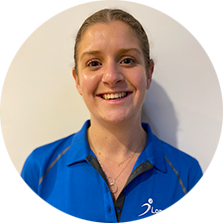Ask Annabel…. is there a link between Exercise and Pain?
A question Exercise Physiologists get asked all the time is, ‘If I exercise when I have pain, will it make my symptoms worse?’ or sometimes the comment, ‘I can’t exercise today because I have pain’. Chronic pain can be very debilitating to many people, and exercise can be the last thing these individuals want to do.
Today, Annabel and the Longevity Exercise Physiology teams at Drummoyne, Edgecliff, Marrickville, Bella Vista, Randwick, Pymble, Balmain, Neutral Bay and Coburg, Melbourne discuss the studies that surround whether exercise increases or decreases pain and the ways to assist in coping with pain.
So, what exactly is pain?
Pain is an unpleasant feeling, causing a reaction to protect the part of the body that is painful. Everyone who has experienced pain knows what it is, but everyone’s pain is different. Many different factors affect an individual’s experience of pain and the exact contributors to pain also differ between individuals and between situations. Pain is one way our body’s protective systems keep us safe. Once an action/situation has taken place, the body will send this information to the brain. These signals then create pain based on the information available as well as any previous experiences. Danger detectors will signal when tissue is approaching its safe limit, so most pain prevents tissue damage. When tissue is damaged, danger detectors become much more sensitive. Psychological and social factors, as well as past experiences, can powerfully influence pain by complex mechanisms in the brain. This is why, with different stimuli, we get different pain responses, and some pain can increase with varying stimuli (“Pain doesn’t equal tissue damage”, 2022).
“Pain is one way our body’s protective systems keep us safe”
For pain that lasts for more than 3 months it is considered chronic pain. It contributes to disability, anxiety, depression, sleep disturbances, poor quality of life, and healthcare costs. Chronic pain is prevalent in 20% of adults within Australia. Chronic pain involves the pain mechanisms, as mentioned previously, becoming overprotective. This means even if the muscle tissues are safe, you will have pain. This occurs within the body, because the pain system can learn over time to be more effective at protecting a certain body part. The influence of social and psychological factors usually becomes greater with persistent pain (Geneen et al., 2017).

For many years, health professionals would suggest rest and inactivity in the treatment plan for those with chronic pain. However, in recent years, exercise has been shown to decrease the severity of chronic pain symptoms as well as provide additional benefits associated with improved overall physical and mental health, and physical functioning. As we can see in the diagram below, pain is a continuous cycle (Moseley, 2007). For example, looking in the right-hand top corner, if the individual stops performing the strengthening or aerobic exercise and becomes less active, our muscles become weak, our stress levels increase, weight may increase, mental health decreases and we have greater levels of pain compared to when we first started, and this cycle can continue.

“…pain is a continuous cycle”
As we have understood, all pain is real, no matter what’s causing it. What surprises most people is that you can have pain when there is no tissue damage. That is, when there’s no damage to muscles, tendons, nerves, or any of the linings within the body. Tissue can withstand only a certain amount of load before it’s damaged. However, our pain system is extraordinarily complex and is triggered by more than just tissue load. Psychological and social factors can also cause pain – these are called non-tissue factors. Therefore, being able to get some movement in the joint safely is the best treatment (Smith et al., 2018).

If you need assistance with an individualised exercise program to help with pain you are experiencing, call Longevity Exercise Physiology Edgecliff, Pymble, Marrickville, Randwick, Drummoyne, Balmain, Bella Vista, Neutral Bay and Coburg, Melbourne on 1300 964 002 to book in a session today.

Written by Annabel Bergman
References:
Pain doesn’t equal tissue damage. (2022). Retrieved 11 May 2022, from https://www.painrevolution.org/factsheets/pain-doesnt-equal-tissue-damage
What Is Pain?. (2022). Retrieved 11 May 2022, from https://www.painaustralia.org.au/about-pain/painaustralia-what-is-pain
Geneen, L., Moore, R., Clarke, C., Martin, D., Colvin, L., & Smith, B. (2017). Physical activity and exercise for chronic pain in adults: an overview of Cochrane Reviews. Cochrane Database Of Systematic Reviews, 2020(2). doi: 10.1002/14651858.cd011279.pub3
Smith, B., Hendrick, P., Bateman, M., Holden, S., Littlewood, C., Smith, T., & Logan, P. (2018). Musculoskeletal pain and exercise—challenging existing paradigms and introducing new. British Journal Of Sports Medicine, 53(14), 907-912. doi: 10.1136/bjsports-2017-098983
Moseley, G. (2007). Reconceptualising pain according to modern pain science. Physical Therapy Reviews, 12(3), 169-178. doi: 10.1179/108331907×223010
